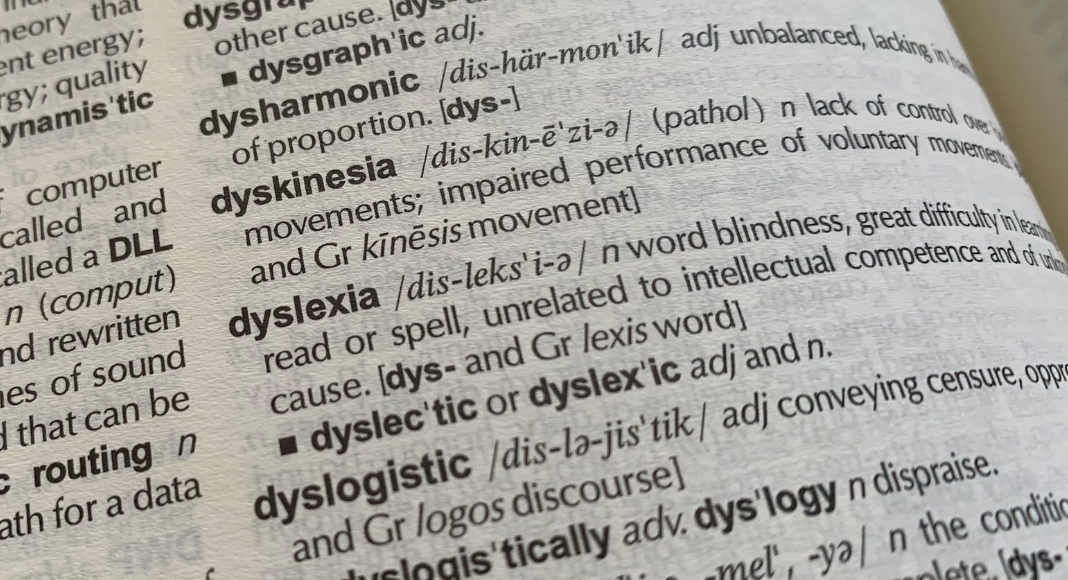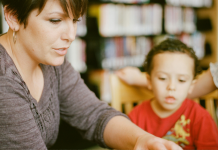As a CALP (Certified Academic Language Practitioner) and ALTA member (Academic Language Therapy Association), I celebrate Dyslexia Awareness Month and always seek to demystify some commonly misunderstood things about dyslexia. The following information is from the International Dyslexia Association (IDA). That’s a great place to start learning more. Each area has its own branch with resources tailored to your location.
Dyslexia by definition is a specific learning disability that is neurobiological in origin.

It’s characterized by difficulties with accurate and/or fluent word recognition and by poor spelling and decoding abilities. These generally result from a deficit in the phonological component of language that is often unexpected in relation to other cognitive abilities (from the IDA Board of Directors, Nov. 12, 2002).
So what does that mean? The brain of a person with dyslexia is physiologically different than a “neurotypical” brain. It’s not the child’s fault that they have dyslexia and they have no way to control it without outside help. They were born with it. Dyslexia is an issue that can have a genetic component, so sometimes it can be found inherited in families.
In my work with children with dyslexia, I have found that ADHD can be correlated to dyslexia, mainly because of the way the brain is impacted by dyslexia. Particularly the inattentive type of ADHD paired with dyslexia confuses parents and educators since that child comes across as “lazy” or “not paying attention” when in reality, they have a deficit preventing them from learning the material. I think teachers should be careful when considering barriers to learning and never label a child as “lazy”- they clearly have something going on and are in need of help of some kind. I’ll get off my soapbox now.
Dyslexia is mystifying to parents and educators because the student usually excels in other areas but has a deficit in some areas of language. Particularly phonological abilities are impacted. Younger children often have an issue trying to match the letter sounds with the letters, for example. A multisensory approach helps students the most, when they use manipulatives and tools to break the words apart (decoding) and identify individual phonemes and the sounds that the phonemes create within the word.
Sometimes I will also see students who have dyslexia and Dyscalculia, which is a similar issue with mathematical reasoning. Dysgraphia also sometimes impacts children with dyslexia or reading issues. Dysgraphia means the student has messy, unreadable, disorganized handwriting. They then experience difficulty with writing and spelling. Again, it’s not their fault. Usually, the child is trying his or her very best. They may need occupational therapy or physical therapy interventions in order to be able to properly form letters.
I frequently talk to teachers who say:
“This child seems to be having a problem and I can’t put my finger on it. They don’t write letters backward all the time though so it can’t be dyslexia.”
This is a myth – sometimes children will write a letter incorrectly or backward but that’s not an intrinsic characteristic of dyslexia. There’s an issue with the brain encoding the shape of the letters, which leads to some children writing an incorrect letter shape, particularly if the shapes look similar (b/d/p/q as an example). It’s normal for all children to have some issues with this. However, if the issues remain and impede their ability to write, it is something to look into as soon as possible, at the very least to rule out dyslexia.
What can you do if your child seems to have some of these issues?
I would recommend talking to your pediatrician and your school about your concerns. The best time to intervene is actually during early elementary school or preschool years. Some schools lack education in dyslexia and might try to tell parents to “wait and see if it gets better.” I encourage families to act quickly before deficits cause the student to lag behind their peers. Research shows that if interventions are put in place by 4th grade, the child can catch up to peers because of the malleability of their brains. After 4th grade, there will be a gap between that child and their peers. Never lose hope, however, because many interventions are available and the Science of Reading provides many empirically-based tools for students to achieve their potential.
As an Orton-Gillingham Practitioner, I always recommend finding a practitioner in your area if you see a reading issue with your child. A multisensory approach to reading benefits any child. A diagnosis of dyslexia is not needed in order to start working with a certified practitioner. In our language-centered world, an investment in helping your child learn to read more effectively pays dividends in their future success.
Luckily for all of us in Ohio, the state is passing some resolutions to mandate universal screening for all kindergarten children. Over the next few years, schools will be implementing these changes and hopefully more children will be identified earlier. The statistic that 1 in 5 children has dyslexia is the one that is most commonly disseminated in the community. I personally believe the actual amount is higher. Some children adapt well enough in their educational career that they evade identification. Hopefully with more screening and awareness, children can routinely receive services to set them on a trajectory to achieve their potential.












